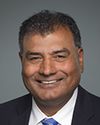I have a couple of questions for CBA as well as TD, if I can get to them.
Thanks very much for your prepared report.
One of the ideas from our family reunification study was to have something similar to a CRA number, system having one number for an applicant for whatever processes they go through. One of the points you make is that IRCC shares client delivery service for the temporary foreign worker program with Employment and Social Development Canada. Do you have some thoughts to share on that and whether you think that would be useful.
I'm going to ask my two or three questions and if you're able to get to the answers, that's great. If not, if you can give me a written response, that would be also very much appreciated.
The second thing I want to ask you about is the removal of red flags and the procedure for that. You were talking about ports of entry. I'm curious about that. I'm also interested in this because there are red flags on a number of the people I deal with. I've no clue. Some of them, I think, were fairly applied and some, and some not. So I wouldn't mind your talking a little about the issue and maybe making a recommendation on the process to remove that, and what you think is fair.
You also mentioned ports of entry. It is common knowledge among Canadian immigration lawyers the need to avoid certain points of entry, based on a history of lengthy delays, unwarranted scrutiny, and bad decisions. Could you highlight which ports of entry those might be? It would be helpful to us in trying to figure out how to help.
My last question for you concerns program and technical issues. You suggested that if we're evolving our client service delivery system, we might want to bring in the CBA at the design stage to test it with lawyers. In that regard, do you know what percentage of applicants to our system use immigration lawyers? This may be an unfair question. It's just a question that came up, and I'm curious to hear your response.
Then to TD, if we don't have enough time, I'd love a written response on this as well.




